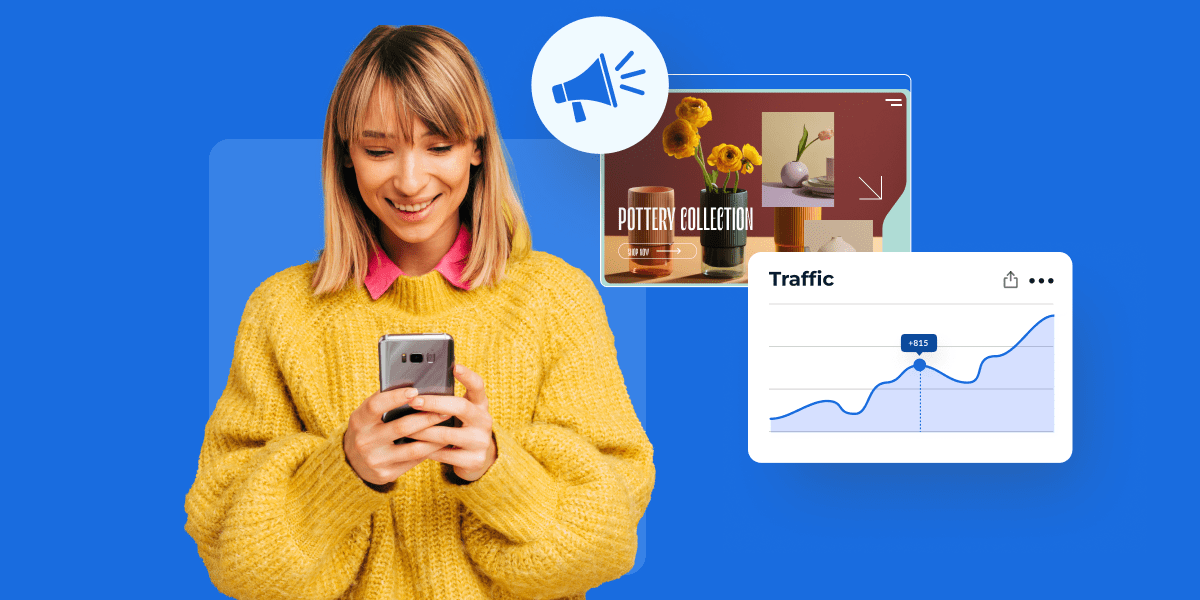In today’s fast-paced digital landscape, brands need to bridge the gap between interest and action swiftly. Click-to-lead ad formats are revolutionizing how businesses capture user information by simplifying the conversion journey. These formats allow users to engage with an ad and submit their details instantly, often without ever leaving the platform. This seamless experience reduces friction, increases lead generation rates, and ensures that attention turns into action. Traditional web forms or landing pages often introduce delays and distractions. By integrating lead capture within the ad itself, Lead funnel ads make it easier than ever to convert curiosity into commitment.
How Click-to-Lead Ads Work in Practice
Click-to-lead ad formats are designed to trigger a lead form when users click on a call-to-action (CTA) within an ad. Once engaged, the platform auto-fills user information like name, email, or phone number using their account data, streamlining the submission process. This minimizes effort and boosts completion rates. These formats are widely used on platforms like Facebook, Instagram, LinkedIn, and Google, where users are already logged in. Because click-to-lead ad formats are natively embedded, they preserve user experience while offering marketers a rich pool of verified leads. It’s a win-win, enhancing convenience for users and results for advertisers.
The Rise of Mobile-First Lead Generation
As mobile usage dominates online activity, marketers must prioritize formats that cater to smaller screens and on-the-go engagement. Click-to-lead ad formats are inherently mobile-friendly, built for speed, and optimized for touch. Users no longer need to zoom in, fill out lengthy forms, or wait for slow-loading pages. Instead, a few taps are all it takes to express interest or request more information. This approach drastically reduces drop-off rates, especially among mobile users who are less patient with clunky forms. Lead funnel ads, by being quick and responsive, are uniquely suited to meet the demands of today’s mobile-first consumers.
Why Marketers Favor Instant Lead Ads
Efficiency is the cornerstone of modern advertising, and that’s exactly what click-to-lead ad formats offer. Unlike traditional lead capture, which often requires multiple steps and redirects, these formats generate leads instantly and directly within the ad environment. Marketers appreciate the ability to gather high-intent leads at scale while maintaining control over the user journey. The middle of the funnel becomes more efficient when lead funnel ads are used, as it shortens the time between engagement and acquisition. With better conversion rates, enhanced data accuracy, and lower cost-per-lead, marketers are increasingly adopting this format to supercharge their campaigns.
Best Performing Platforms for Click-to-Lead Ads
Not all platforms support click-to-lead ad formats equally, and choosing the right one can impact success significantly. Facebook and Instagram, through Meta’s Lead Ads, allow advertisers to target users with precision and capture leads natively within the app. LinkedIn Lead Gen Forms cater specifically to B2B audiences, offering pre-filled forms with professional credentials. Google’s Lead Form Extensions extend this functionality to Search and YouTube, capturing users actively searching for products or services. These platforms support different industries and goals, but all leverage the power of lead funnel ads to streamline engagement. Selecting the right platform based on audience and objective is key to maximizing ROI.
The User Experience Advantage

User experience is paramount in digital advertising. Click-to-lead ad formats enhance UX by making interactions smooth and intuitive. Instead of being redirected to an external site, users stay within the platform they’re already engaged with. This consistency builds trust and encourages action. Additionally, pre-filled data means fewer typing errors and less frustration. When the middle of the process is optimized using lead funnel ads , users are more likely to complete forms and submit accurate details. This leads to higher satisfaction and better-qualified leads for businesses. Prioritizing user comfort translates into stronger relationships and a positive brand impression.
Customizing Forms for Better Targeting
One of the strengths of click-to-lead ad formats lies in their flexibility. Advertisers can customize forms to gather the most relevant information—be it email addresses, service preferences, or job titles. Conditional logic can tailor the experience based on user selections, while privacy disclaimers and opt-in features build compliance and transparency. Placing the keyword lead funnel ads in the middle of this process ensures advertisers get exactly what they need without overwhelming the user. The ability to segment leads by their responses enables smarter follow-ups and personalization. Customization ensures that every form submission adds meaningful value to both the user and the brand.
Challenges and Limitations to Watch For
Despite their many benefits, click-to-lead ad formats are not without challenges. One common concern is lead quality. Since the process is so quick, users may submit forms with low intent, leading to unqualified leads. Advertisers must address this by using strong copy, qualifying questions, and clear CTAs that filter for interest. Additionally, the middle ground between convenience and qualification must be balanced when using click-to-lead ad formats. Another limitation is integration—ensuring that leads flow smoothly into CRM systems or email workflows is critical for timely follow-up. Without solid backend systems, even the best lead ad formats can fall short of delivering long-term value.
Measuring Success and Key Metrics
Like all marketing efforts, the effectiveness of click-to-lead ad formats must be measured against specific KPIs. Cost per lead (CPL), lead volume, conversion rate, and lead quality are essential metrics to monitor. Additionally, tracking the percentage of form opens that result in submissions can reveal drop-off points and optimization opportunities. When used effectively, click-to-lead ad formats can lower CPL while increasing lead velocity. Comparing these metrics to traditional landing pages often shows a stark difference in performance. Marketers should also evaluate how leads convert over time, ensuring that the initial efficiency translates into downstream revenue or engagement.
Creative Strategies for Better Engagement
Success with click-to-lead ad formats also depends heavily on creative execution. Eye-catching visuals, compelling headlines, and persuasive CTAs are vital to draw users into the lead flow. Offering something of value—a free consultation, downloadable guide, or exclusive offer—can increase form submissions. The middle of your creative should include cues that highlight the ease of completion through click-to-lead ad formats, reassuring users that they won’t be redirected or burdened. A/B testing variations in imagery, copy, and CTA buttons can uncover insights about what resonates most with your audience. Effective creative not only captures attention but also guides users toward confident, informed action.
Conclusion: Embracing the Future of Instant Engagement
Click-to-lead ad formats represent a shift toward more intuitive, efficient, and user-friendly lead generation. By keeping the experience native, reducing friction, and leveraging platform data, these ads convert interest into leads faster than ever before. Businesses looking to scale their lead gen efforts must adapt to this model of instant interaction. Whether it’s B2B or B2C, mobile or desktop, every audience benefits from the simplicity and speed that click-to-lead ad formats offer. As platforms continue to innovate and refine these features, marketers must focus on optimizing every stage—from creative to follow-up—to harness their full potential. When executed with purpose and strategy, these formats not only increase leads but also build a foundation for stronger customer relationships and long-term growth.
